How to build a rental marketplace platform without coding
Learn how to build a rental marketplace platform from idea to launch. Explore rental business models, costs, examples, and our step-by-step launch plan.
Are you looking to launch an online platform where people can rent apartments, vehicles, equipment, fashion, or everyday items?
If so, you’re tapping into one of the fastest-growing segments of the sharing economy. Over the past several years, rental marketplaces have exploded across sectors like vehicles, short-term accommodations, and fashion. In 2024, the peer-to-peer rental industry was valued at $17.7 billion, with an expected 10% CAGR (compound annual growth rate) between 2025 and 2034. Consumer trends like sustainability and increased preferences for access over ownership have fueled this rapid growth.
Whether you want to launch a peer-to-peer, business-to-consumer (B2C), or business-to-business (B2B) model, this guide will help you get started quickly and effectively. We’ll share our proven methodology for building a rental marketplace platform from the ground up, along with cost estimates and examples of successful rental marketplaces you can learn from.
Let’s get started!
A rental marketplace is a platform where individuals or companies can rent different types of goods from one another. Users can easily offer items they own for temporary use, and others can find and rent those items, with the marketplace facilitating the transaction, usually in exchange for a small fee.
Here’s a comparison of the main types of marketplaces:
The best-known example of a rental marketplace is Airbnb. But as you’ll find out in this guide, successful marketplace concepts have been started across endless niches and industries.
Since Airbnb first started in 2007, the popularity of peer-to-peer rentals has skyrocketed. Sharing all kinds of goods—from baby gear and cameras to bikes, cars, and homes—is replacing ownership for more and more people all around the world. In fact, the rental model has found its way into many different niches.
Here are 10 areas where rental marketplaces are really popular:
- Accommodation: This is probably the most well-known niche for rental marketplaces. There’s always a demand for temporary housing and vacation rentals, and these platforms have tapped into that need.
- Vehicles (cars, boats, RVs, bikes, scooters, etc.): Not everyone wants the hassle of owning a car or boat, so rental platforms make it easy to get around without the commitment of ownership. Peer-to-peer car, boat, and RV rentals are popular marketplace concepts.
- Venues and locations: Thriving niche marketplaces have also been established around renting party venues, swimming pools, private land for outdoor experiences, film locations, music studios, and rehearsal spaces—you name it.
- Construction equipment: Construction equipment is expensive, and in some places, construction work is seasonal. That’s why renting equipment instead of buying it outright is a smart move, and rental platforms are capitalizing on this.
- Fashion and luxury items: Looking stylish can be expensive, but rental marketplaces offer a solution. You can rent designer clothing, handbags, jewelry, or watches for a special occasion without breaking the bank.
- Gear and equipment: Cameras, power tools, outdoor gear, or hobby equipment can be pricey and sit idle most of the time. Local marketplaces that rent these items offer a lot of value for both sides.
- Office space and equipment: Like accommodation, renting office space is a popular option. Co-working spaces, in particular, have seen a surge in popularity. Additionally, there’s a demand for renting office equipment.
- Electronics and home appliances: Electronics are essential in modern life. When something breaks unexpectedly, rental marketplaces offer a quick and convenient solution.
- Subscription or long-term leasing: Furniture, baby products, or tech gadgets can be expensive to purchase outright, especially for temporary needs. Rental marketplaces offer a flexible alternative through subscriptions or long-term rentals to make it easier to access what you need without the hassle of ownership.
- Community-based sharing platforms: Many small and medium-sized platforms, and even a few big players, offer a rental marketplace for “anything.” These marketplaces let folks rent anything from lawnmowers to schoolbooks from their neighbors and are usually heavily focused on local communities.
It’s interesting to see that all these niches have something in common: expensive ownership costs and temporary need for these assets. Rental marketplaces solve problems for both buyers and sellers and create viable platform businesses.
Here are a few of the most notable benefits of launching your own rental marketplace platform:
- You don’t need to hold inventory because your platform connects supply and demand rather than selling physical goods.
- You benefit from network effects, where every new user makes the marketplace more valuable.
- You have flexible monetization options, like commissions, subscriptions, or listing fees, which make it easy to start generating revenue early.
The numbers support the validity of this business model. In 2024, Airbnb generated $11.1 billion in revenue across over 491 million nights and experiences booked on its platform. Meanwhile, Turo, a P2P car rental marketplace known as the “Airbnb of cars,” reached $985 million in revenue in 2024.
It’s easy to understand why rental marketplaces are so successful. E-commerce, marketplaces, and the sharing economy are huge trends with massive business potential.
Renting expensive or infrequently used items instead of buying them is cheaper and often more convenient. At the same time, individuals are increasingly willing to list their own items on a rental marketplace platform to earn some money on the side.
Marketplace platforms have another benefit: you can start a marketplace without any initial inventory. Because providers create your supply, starting a marketplace doesn’t require a huge investment.
Most importantly, marketplace software has become extremely affordable, quick, and user-friendly. For example, with Sharetribe, you can launch a fully functional marketplace in one day without writing a single line of code.
There has truly never been a better time to become a marketplace entrepreneur.
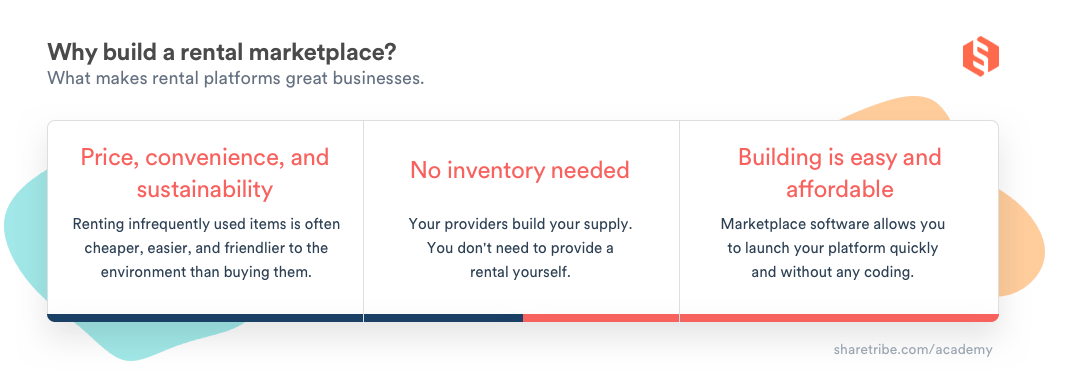
Online rental marketplaces that succeed are backed by a suitable business model. Getting the business model right is key since a particular model working in a specific niche may not work for another.
In general, rental marketplaces tend to follow one of two marketplace business models:
- Commission: Take a percentage of each transaction on your platform. This aligns your revenue with marketplace activity and is the most popular monetization method for rental marketplaces.
- Subscription: Charge providers or customers a recurring fee (monthly or annually) to access the platform or unlock premium features. This model creates predictable, recurring revenue.
Here are some of the other monetization options for rental marketplaces:
- Listing fees: Charge providers a small fee to list their rental offerings on your marketplace. This works well for high-value rentals or niche marketplaces where demand is harder to find.
- Lead fees: Allow providers to pay for access to qualified leads instead of taking a commission on bookings. This model is sometimes used in B2B marketplaces or high-ticket rentals, such as construction equipment or commercial spaces.
- Paid advertising: Sell advertising space on your platform to providers or third-party companies. Sponsored listings or promoted placements can help providers increase their visibility.
- Freemium model: Offer basic access to your platform for free while charging for advanced features, priority placement, or premium services. This can help build early traction while monetizing power users.
In the case of commission, users pay only when they use the service, with the marketplace taking a cut. The commission rate can vary anywhere from 5% to 50%. The key is to decide whether to charge the buyer, the seller, or both.
We conducted a study of the top 100 online marketplaces and developed these helpful commission benchmarks for rental marketplaces:
In a subscription model, users pay a certain amount every month to get access to the services. This creates a continuous flow of income for the marketplace. But it’s not suited for users who rent items once in a while, such as vacation homes, event venues, or clothing for special events.
The beauty of the commission model is that it doesn’t create a barrier for sellers or buyers. They only pay for the platform when they’ve received value (made a sale or found what they are looking for).
At the same time, commission can be a very lucrative and scalable revenue model: you get a piece of all the value that passes through your platform. That’s why most successful marketplaces monetize through commission.
It’s also possible for marketplaces to monetize with a combination of subscription and commission. Some marketplaces have additional revenue streams through services (like insurance or shipping) or featured listings and ads.
The roadmap for building a rental marketplace follows these steps:
- Find your niche and pre-validate your marketplace idea
- Choose a sustainable business model
- Build an MVP (Minimum Viable Platform) of your rental marketplace that supports the key marketplace features
- Acquire your first users and build supply and demand
- Track key metrics to drive growth
- Reach problem-solution fit and product-market fit
- Learn from your users and improve
- Grow and scale your business
In this section, we’ll go through all these tactics in more detail and discuss how you can launch your marketplace in a single day using Sharetribe’s no-code marketplace builder.
For a deeper dive into our proven methodology, check out our comprehensive guide to creating a marketplace.
Every successful marketplace starts with an idea. In the case of Airbnb, it was the idea of renting spare rooms out to people in exchange for money. At that time, the founders of Airbnb, Brian Chesky and Joe Gebbia, were struggling to pay their monthly bills.
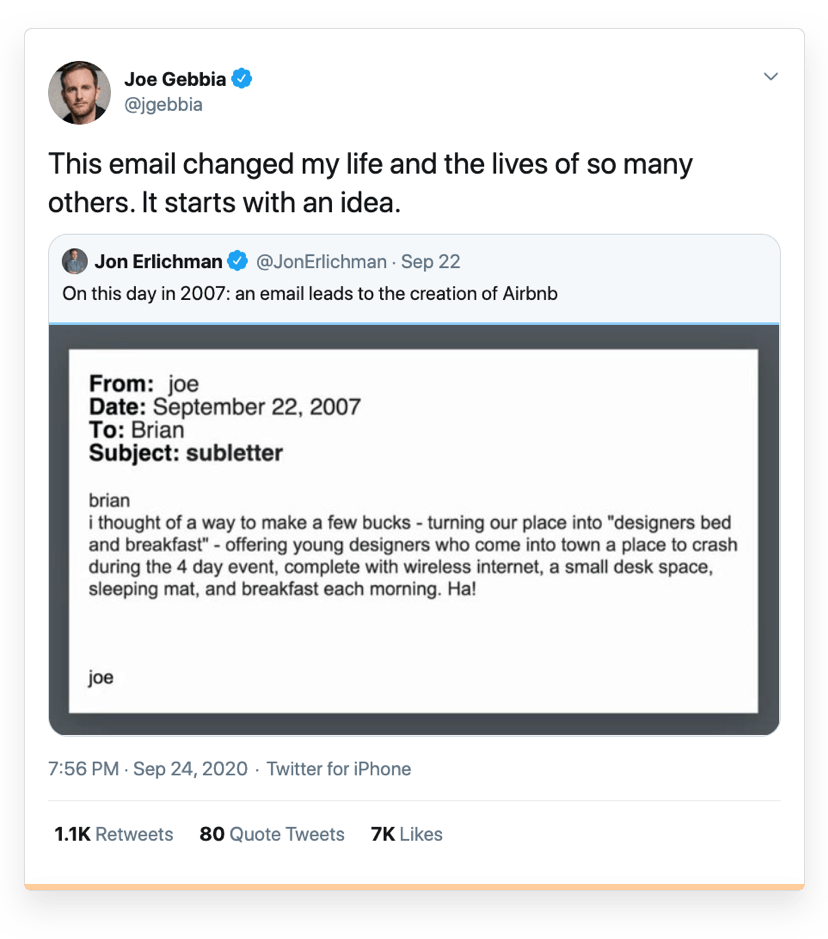
You need to find pressing problems that your rental marketplace can potentially solve. At Sharetribe, we’ve found that successful founders often land on their marketplace ideas through three different routes.
- They identify a problem they have themselves.
- They identify underused assets, inefficient buying processes, or fragmented markets.
- They identify a niche market that’s poorly served on existing platforms.
We’ve also found that before starting to build, it helps if you can pre-validate your idea. Validation helps identify potential flaws or gaps in your initial concept. Addressing these issues early on saves you time, money, and effort that could be wasted on building a product nobody wants.
Your business model defines how your rental marketplace generates revenue. The right approach will help you attract providers, encourage high-quality listings, and ensure your platform delivers value from day one.
Here’s a breakdown of the most common marketplace business models, along with key pros and cons for rental marketplaces:
Choosing the right business model depends on your niche and rental category. We recommend starting with a simple commission model to keep onboarding easy for providers.
As your platform grows, you can add subscriptions, listing fees, or premium services to diversify your revenue streams and offer more flexibility to your users.
After you’ve found and validated your marketplace idea and identified a sustainable business model, it’s time to actually build your rental marketplace website.
When you’re just starting, you can’t build everything at once. And in fact, you shouldn’t: many founders have wasted lots of time and money building too much too soon.
Instead, for your first version, build a Minimum Viable Platform that:
- Allows you to solve a key problem for your providers and customers
- Solves that problem better than any other existing solution
This way, you get to launch fast and see if your idea has wings.
Sharetribe is built with this iterative process in mind. Our no-code marketplace builder powers all the features listed above (and more). Once you’re ready to invest more into your platform, you can infinitely extend Sharetribe’s no-code functionality with custom code.
There are six main ways to build a rental marketplace:
- Code it from scratch (or hire someone to do it).
- Build on open-source marketplace software (self-hosted).
- Use a generic website or e-commerce builder (like WordPress) with marketplace plugins, themes, or extensions.
- Combine several no-code tools (like Webflow, Airtable, and Zapier) or use a visual programming tool like Bubble.
- Use a dedicated no-code marketplace software solution like Sharetribe.
- Develop on top of an API-based marketplace solution (like Sharetribe’s Developer Platform).
During the dot-com boom and the years prior, the only option was to code the platform from scratch. This method granted marketplace founders full flexibility in terms of functionality and the visual aspect. But building from scratch is extremely time-consuming, and, if outsourced, typically requires a budget north of $50,000.
Today, you have lots of no-code alternatives to choose from. If you enjoy building, you can achieve the necessary marketplace functionality with a combination of plugins or no-code tools.
However, a dedicated marketplace like Sharetribe is likely the fastest and easiest choice. It also requires much less maintenance than monitoring the interplay of several different products and is infinitely more scalable thanks to the Sharetribe Developer Platform.
Regardless of the method you choose, you need to understand the key features that let you launch your product quickly and start learning from real users.
The must-have list for rental marketplace features includes:
- User profiles
- Listings
- Availability and booking management
- Map and location search
- Online payments
- Holding payments and delaying payouts
- Reviews
- Admin tools
However, if you’re benchmarking giants like Airbnb or Turo, it’s easy to think this short list is nowhere near enough. These platforms have lots of amazing, complicated functionality that makes their user experience perfectly tailored to the needs of their audience.
Here are examples of how the rental marketplace essentials look and work on Sharetribe.
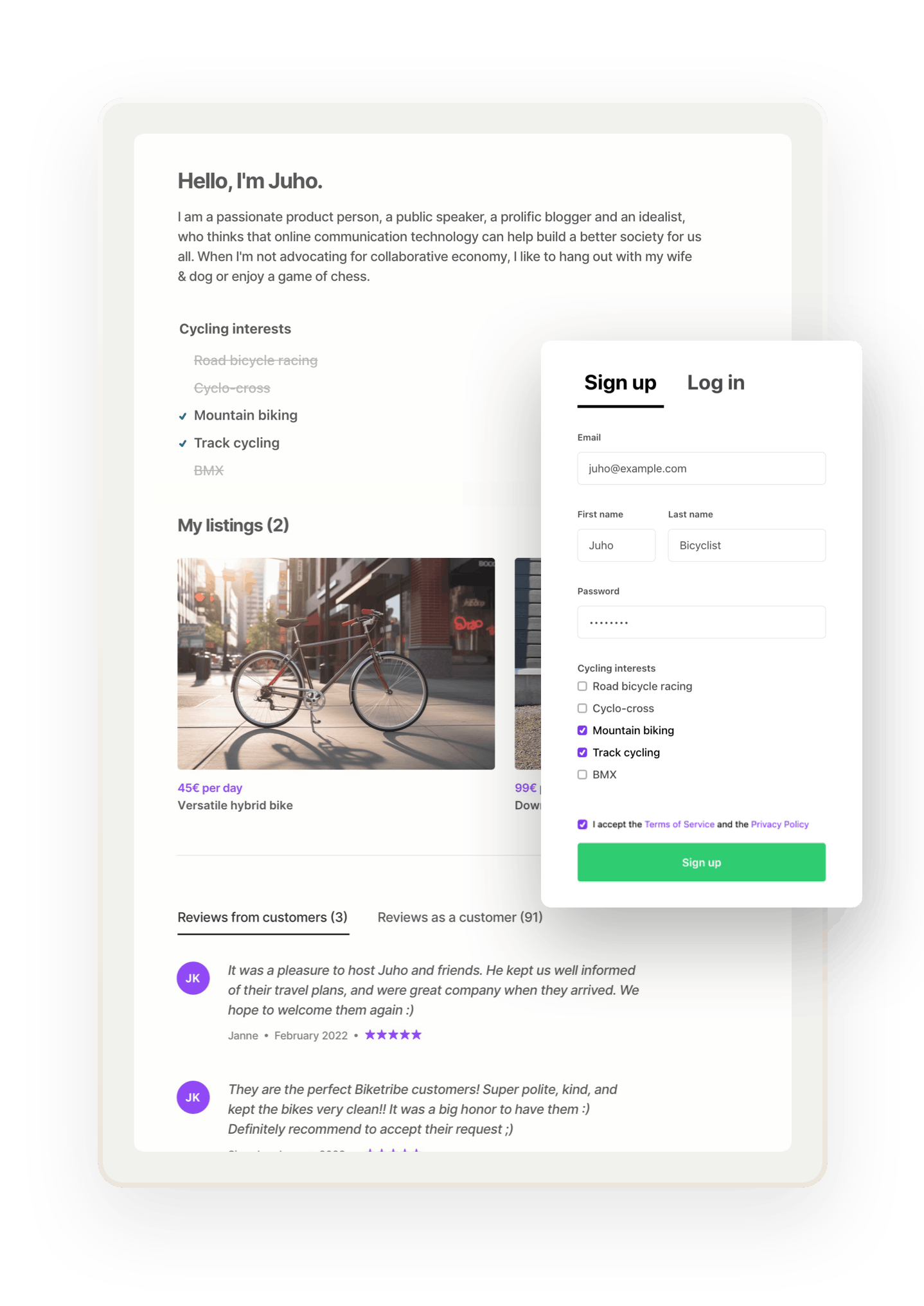
User profiles
When users, both providers and renters, join your platform, they create profiles with their name, photo, and other relevant info. Here's how user profiles look on Sharetribe.
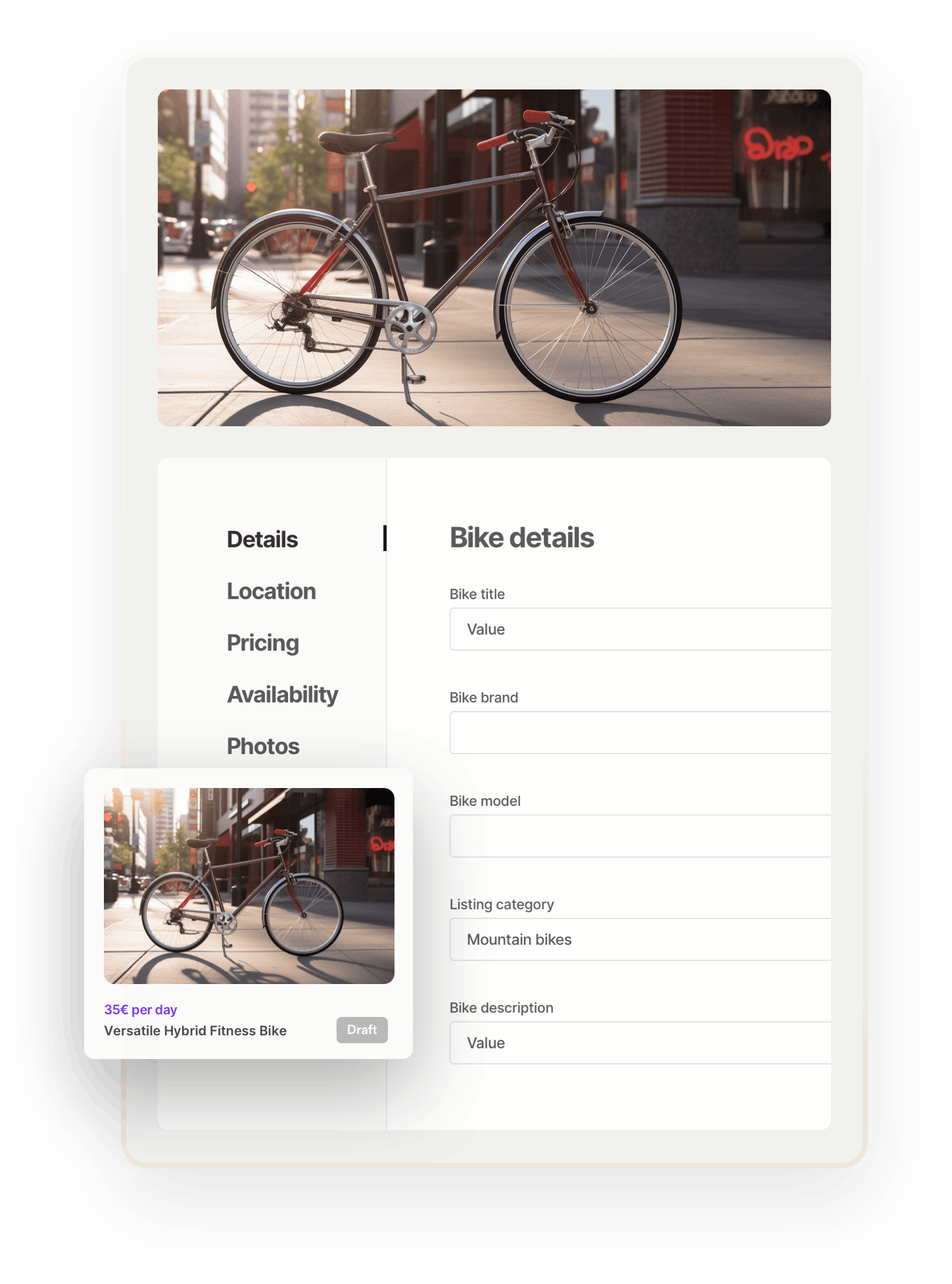
Listings
Providers can showcase their rental items with images and descriptions so renters know what they’re getting. On Sharetribe, you can customize what information your rental providers need to fill in when they create a listing.
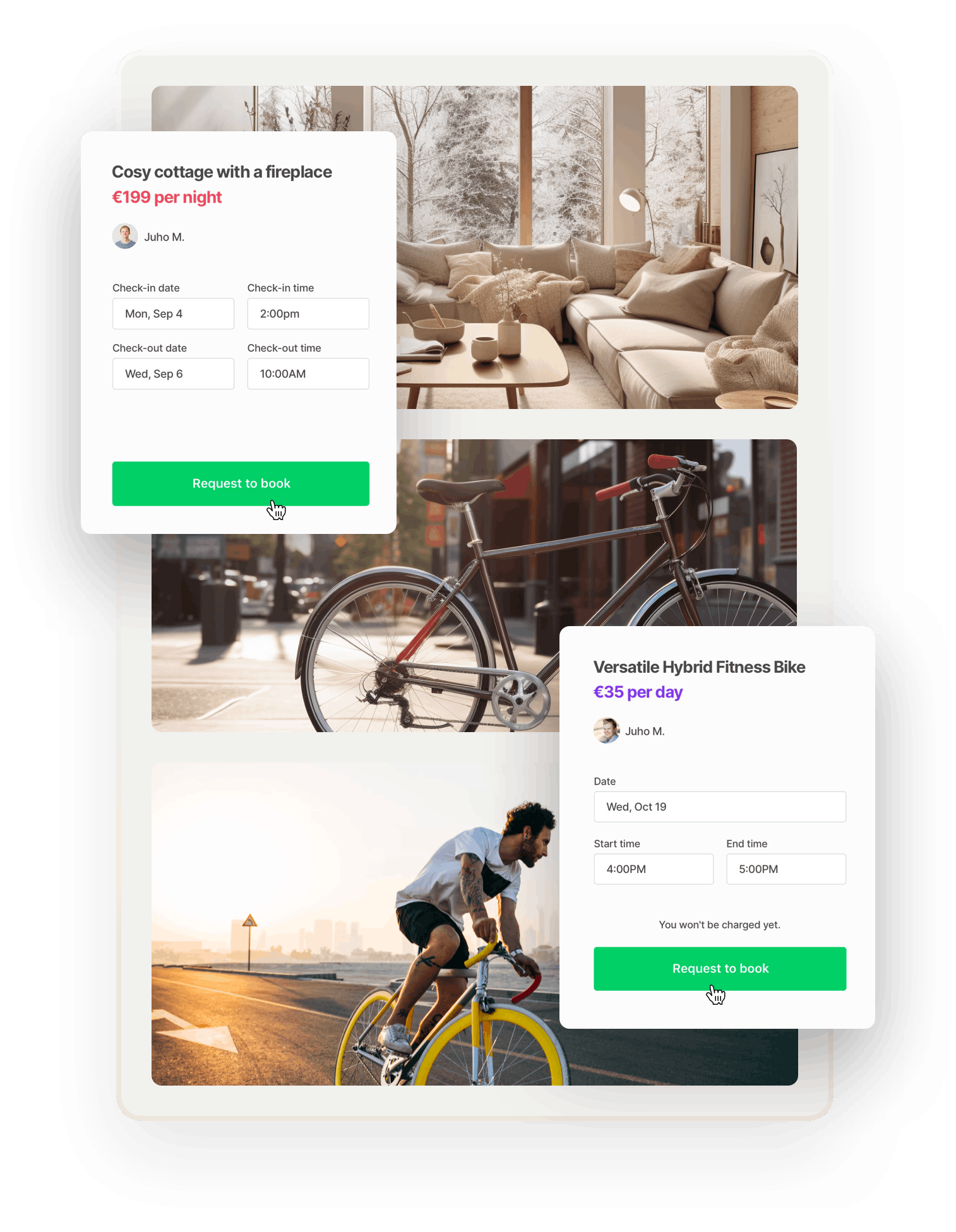
Availability and booking management
On a rental marketplace, providers need to be able to control their availability and prevent double bookings. On the other hand, renters should easily see when items are open to rent and filter listings based on availability. Sharetribe gives your providers a powerful availability feature set with hourly or daily booking management, availability exceptions, and more.
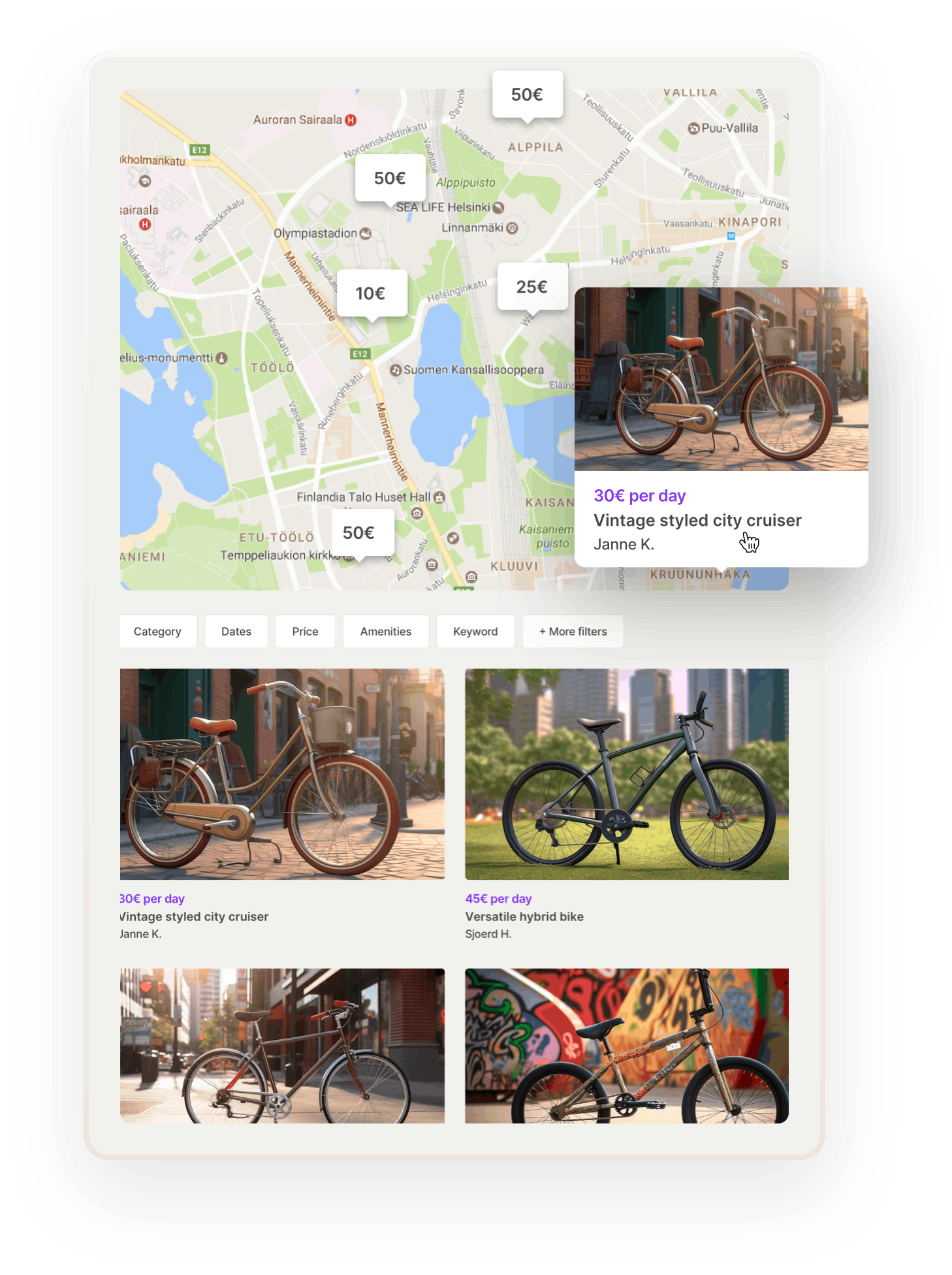
Map and location search
Since rentals are location-based (think bikes, cars, equipment, or homes), having a map feature is crucial for users to find what they need nearby. (The map feature can be disabled in Sharetribe if your concept doesn’t need it.)
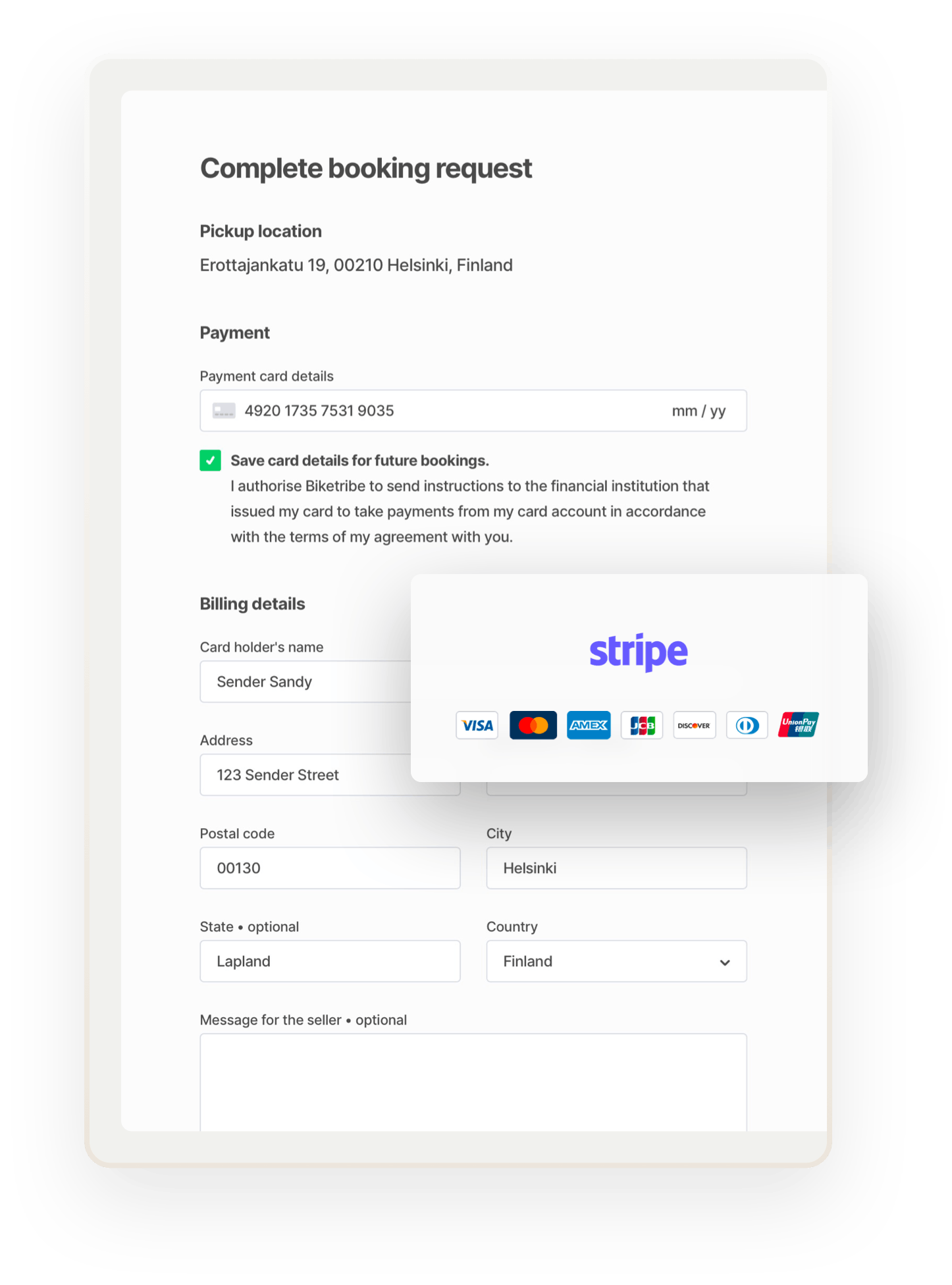
Online payments
Smooth and secure payments are vital to a rental marketplace’s value proposition. You also need to make payouts to providers and charge your commission in compliance with online payment regulations. Sharetribe has an integration with Stripe Connect so that you can do all of this without coding. But if you are custom-developing your marketplace, you can integrate with any third-party payment provider.
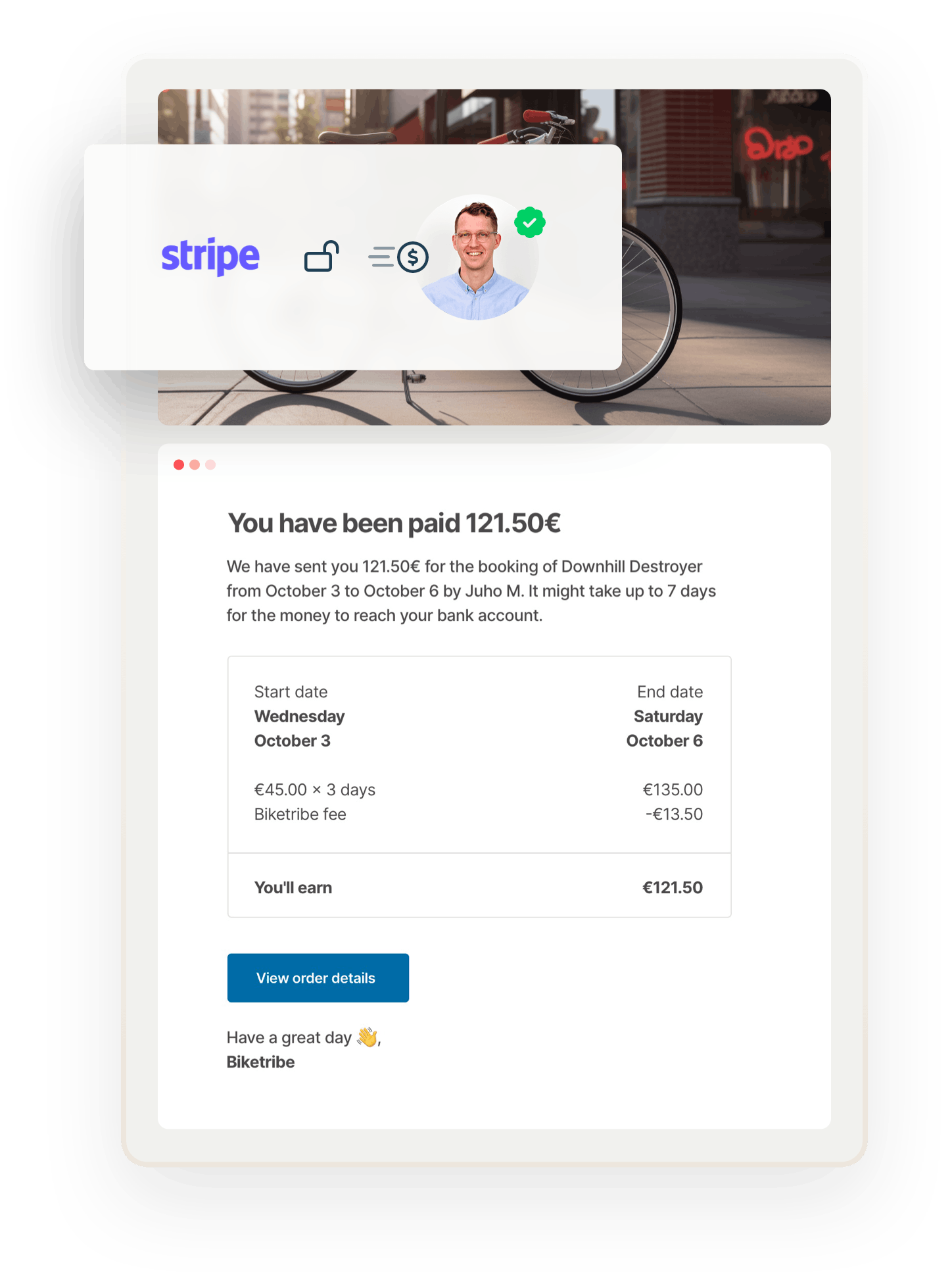
Holding funds and delaying payouts
Delaying payment until after the rental is complete helps ensure both parties uphold their end of the deal. Delayed payouts are crucial for establishing trust on any peer-to-peer marketplace.
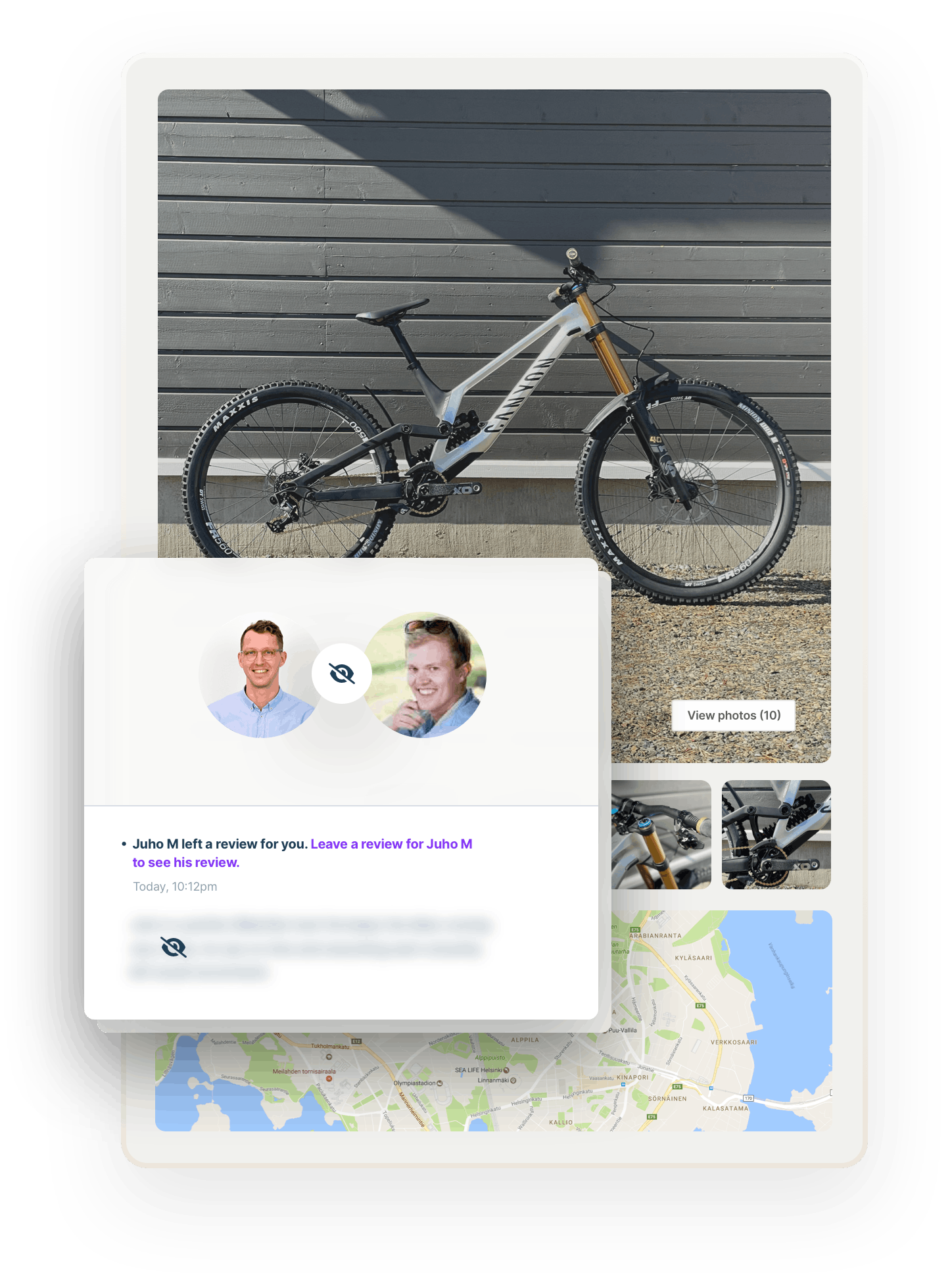
Reviews
Building trust is essential for a peer-to-peer marketplace. Both providers and renters should be able to leave reviews after a transaction to help others feel confident about their choices.
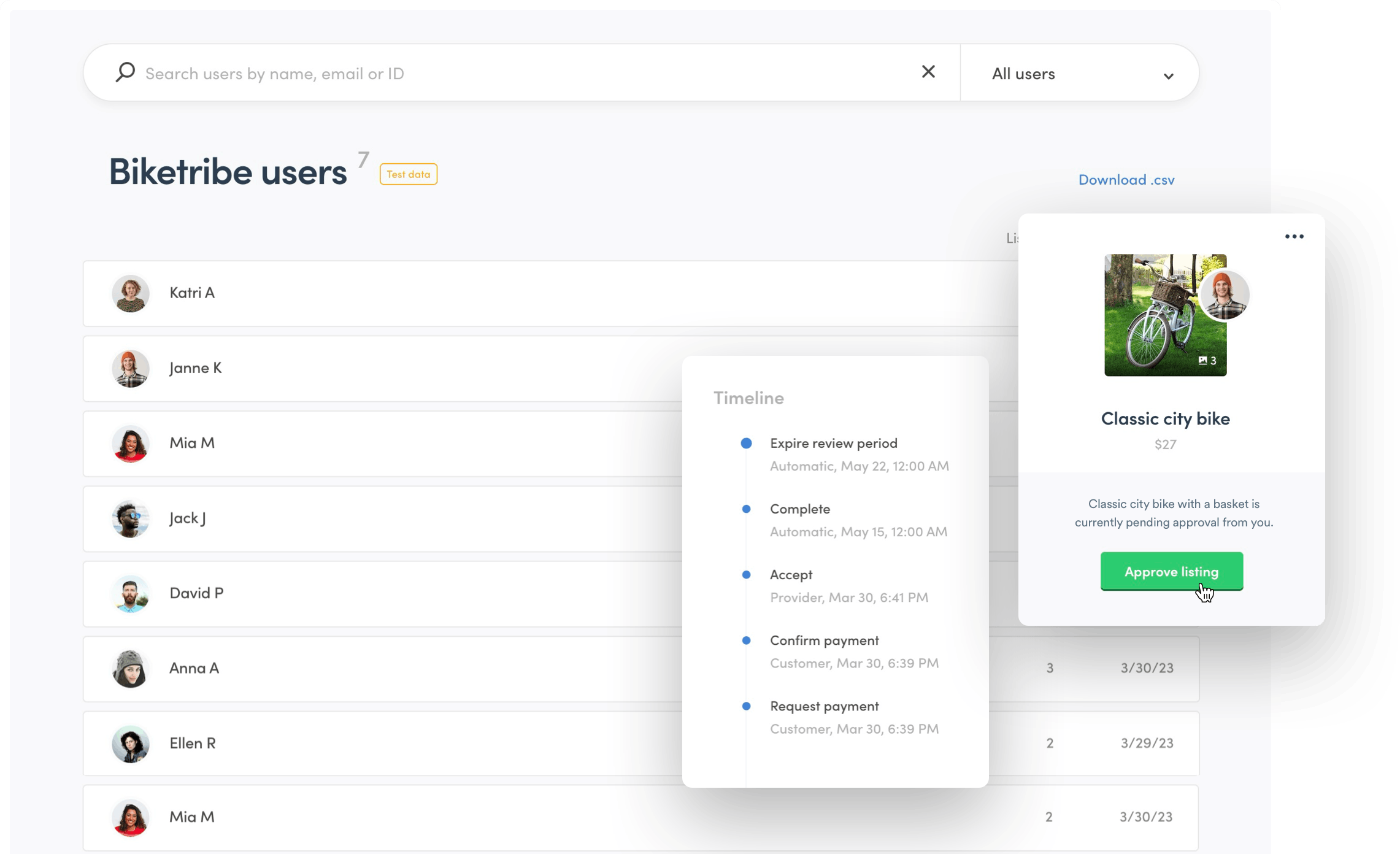
Admin tools
As the marketplace operator, you need tools to monitor user activity, moderate content, and manage payments to ensure everything runs smoothly. Sharetribe’s no-code marketplace builder also includes powerful admin tools, such as content moderation, user analytics, and dispute resolution.
Every rental marketplace faces the classic chicken-or-egg problem: do you get renters or providers first?
The best approach is to start by onboarding a small group of high-quality providers in a focused niche. Once you have listings, shift your attention to attracting your first renters.
In the case of Drive lah, the founders first contacted car owners inquiring whether they’d rent out their cars, as owning a car is quite expensive in Singapore. Then, they went after the renters and built the marketplace. Likewise, Swimmy targeted pool owners first.
So, figure out which segment gains the most from the transaction and target them. This will make it easier to target the other side.
Remember that early growth is about creating marketplace liquidity: providers regularly get bookings, and renters can consistently find the items they need. When both sides experience value quickly, your marketplace builds trust and gains momentum.
Balancing supply and demand is key to this process. Small, well-matched groups of users generate early transactions and validate your marketplace idea faster. This also reduces wait times, increases user satisfaction, and encourages repeat use. Plus, early transactions are the best proof of product-market fit (more on this later).
Once your rental marketplace is live, data becomes your most valuable tool for growth. Tracking the right metrics helps you understand what’s working, spot friction points, and make informed decisions about where to focus your efforts.
But not every metric matters equally. Focus on the numbers that best reflect your platform’s health and user satisfaction.
Liquidity is one of the most crucial metrics for success in a rental marketplace. It’s measured by your sell-through rate (the share of listings that get sold within a certain time) and purchase rate (the share visits that lead to a sale).
In addition to liquidity, focus on these key marketplace metrics:
- Gross merchandise volume (GMV): The total value of transactions happening on your marketplace
- User base growth: The increase in the number of active providers and customers over time
- Transaction volume: The total number of completed bookings or service transactions
- Repeat purchase rate: How often customers return to book services again, which is a key signal of marketplace stickiness
- GMV retention: How much of your GMV value you’re able to keep every month
- Unit economics: Specifically, the ratio between your CAC (customer acquisition cost) and CLV (customer lifetime value)
These metrics give you a clear view of marketplace performance, but they also serve a bigger purpose: tracking your progress through key growth milestones.
To build a profitable online marketplace for renting, you need to solve problems at scale. Thus, as a final step, you need to focus on scalability.
But before you scale, it’s necessary that you hit:
- Problem-solution fit
- Product-market fit
Problem-solution fit is when your marketplace truly solves a problem that users are willing to pay for. At this stage, you should:
- Consistently facilitate transactions between supply and demand
- Collect revenue from those transactions
This point is difficult to reach and can require you to adjust your positioning, messaging, product, or pricing. Don’t lose faith! And don’t strive for ambitious growth before validating your problem-solution fit and reaching product-market fit.
Product-market fit means you have identified a sizeable market where supply and demand grow sustainably, and your business is ready to scale. At this stage, you’ll improve on your initial MVP, establish a growth engine, and prove your business can become profitable.
Once you’ve reached product-market fit in your initial niche, you have a great playbook for growth. Use the lessons you learned and grow your marketplace gradually by introducing new markets or rental categories and reaching product-market fit in them one at a time.
Launching early is the key to learning what your users truly need, which will kickstart the cycle of continuous improvement. You can’t fully understand your users’ goals or pain points until your rental marketplace is live.
As you iterate, stay close to your users so you can:
- Build the right features
- Adapt quickly
- Fix problems before they escalate
- Uncover opportunities for growth
The most successful marketplaces launched quickly with great essentials and then refined their product continuously based on real user feedback and behavior.
After launch, actively collect feedback from both renters and providers through surveys, interviews, and founder-led onboarding. Pay attention to where users drop off, what features they request, and which listings perform best. And use insights from your key metrics to identify bottlenecks and opportunities.
Once you’ve validated your idea and reached product-market fit, it’s time to scale. Successful scaling means expanding your supply and demand while maintaining a great user experience. You can grow your marketplace on a budget by doubling down on what works, whether it’s word-of-mouth, local partnerships, or paid marketing.
But true scaling means replicating your success playbook in new contexts: launching in a new region, introducing new rental categories, or adapting your platform for a different audience.
As you scale, revisit your key metrics to ensure both sides of your marketplace stay balanced. Explore scaling strategies like adding new categories or locations, improving onboarding flows, or launching referral programs.
Learn more in our complete guide on how to grow your marketplace.
Building a rental marketplace can be costly and time-consuming if you’re starting from scratch. Developers typically charge around $50,000 for basic features, not including hosting, third-party tools, maintenance, and updates.
However, Sharetribe allows you to build a marketplace without any coding. Sharetribe’s hosted, no-code builder lets you launch quickly and affordably. Plans start at $39/month, so it’s a cost-effective option for early-stage marketplace founders.
If you’re looking to validate your idea and build an MVP, Sharetribe’s 12-month Pro plan costs $259 per month (or $199 if you buy an annual subscription). If we look at the total costs for the first year of running your marketplace, it might look something like this:
Your rental marketplace platform
| Sharetribe Pro plan for 12 months (annual billing) | $2,388 |
| Domain registration for 12 months | $10 |
| Logo design – free using a tool like Canva | $0 |
| Stock images – free using a service like Unsplash | $0 |
Marketing and user acquisition
| Blog and content marketing (Sharetribe’s Pages feature) | $0 |
| MailChimp email marketing – free up to 500 contacts | $0 |
| Google Analytics – free version | $0 |
| Total first-year rental marketplace budget with Sharetribe | $2,398 |
Compared to building a marketplace from scratch, you’ll save tens of thousands of dollars—and probably at least as many hours. That’s time and money you can spend on building and growing your business instead. You can start your free Sharetribe trial here.
Now, imagine your rental marketplace shows signs of success and you’re ready to invest in custom features. You can outsource design and development to Sharetribe’s Expert network.
Many marketplaces only need gradual improvements, like adding custom booking flows or location-specific features. Sharetribe’s built-in features cover most rental marketplace needs, so totally custom builds are rarely necessary. Instead, you can keep the no-code essentials and build the specific features or functionalities you need on top.
The following budget is for a full custom-development project, including visual design and unique functionality.
Your rental marketplace platform
| Sharetribe Extend plan for 12 months (annual billing) | $3,588 |
| Transaction fees for an average of 1,000 transactions per month (500 transactions are included in the plan) | $1,140 ($95/month) |
| UX design and wireframes | $1,500 |
| Custom development | $5,000 |
| Front-end hosting | $360 |
Marketing and user acquisition
| MailChimp Standard plan for up to 25,000 subscribers | $2,976 |
| Google Analytics – free version | $0 |
| Total first-year custom service marketplace budget on the Sharetribe Extend plan | $14,564 |
Many rental marketplaces have found great success, some even reaching billion-dollar valuations. Let's take a look at a few examples.
Airbnb is the archetypical peer-to-peer rental marketplace, symbolizing what such marketplaces should look like and their business potential.
Airbnb offers a revolutionary alternative to traditional hotels. It provides travelers unique and often more affordable lodging options, catering to a growing desire for authentic experiences and local immersion.
On the other side of the marketplace, it gives hosts the opportunity to monetize their spare rooms and accommodations. This dynamic supply and demand curve helped Airbnb become a billion-dollar brand and more valuable than the top 5 hotel chains combined!
A growing Airbnb competitor is VRBO. The company was originally known as “Vacation Rental By Owner,” and this continues to be its focus: offering a platform for owners to rent their homes and for customers to find a suitable vacation rental for a family or group.
In the wake of Airbnb’s success, clever founders have found more niches in the apartment rental market that are worth focusing on. For example, Sharetribe customer Bali Listings focuses on rental properties exclusively in Bali.
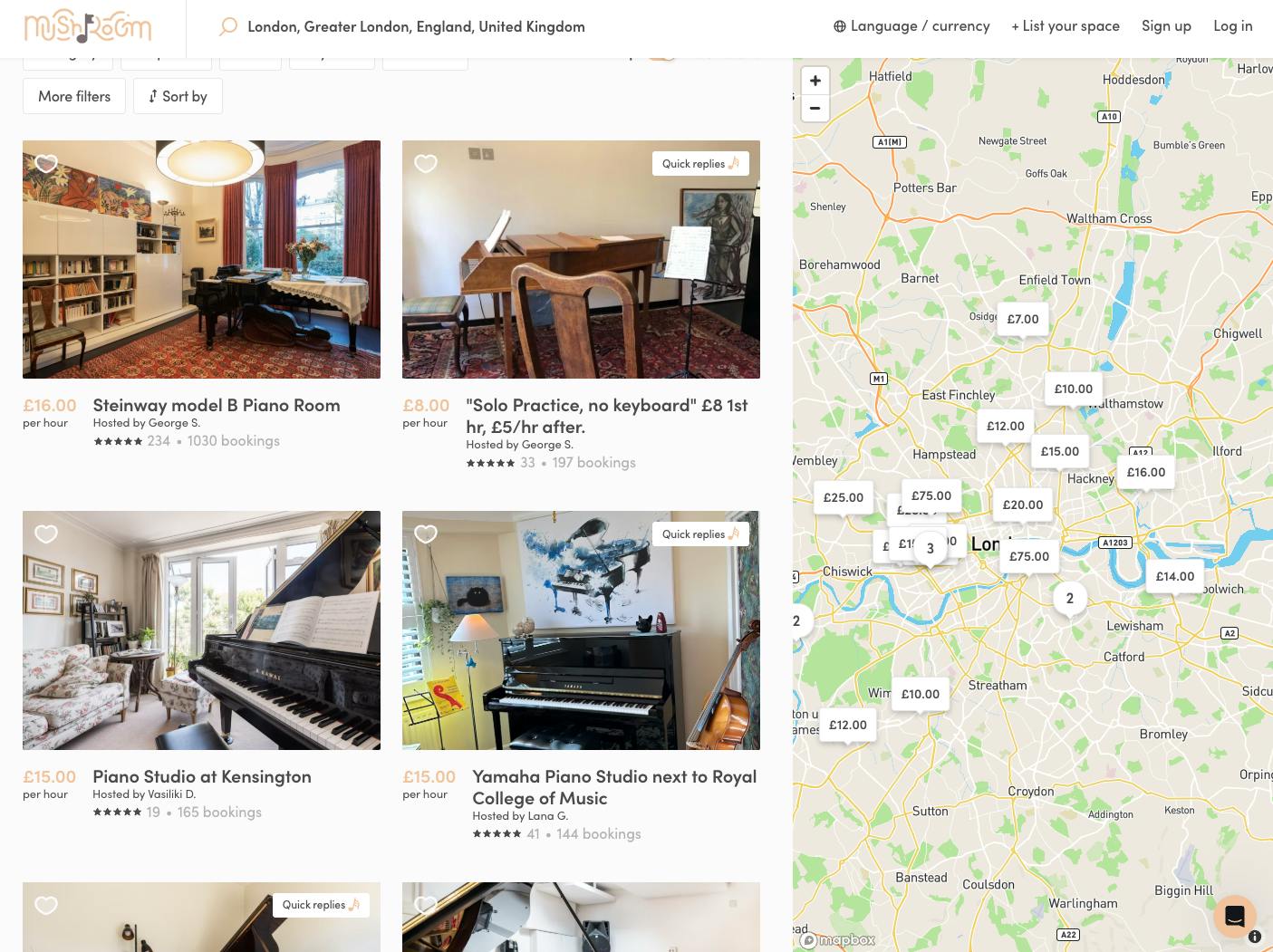
In addition to apartments, many other types of spaces and venues are needed on a temporary basis. This makes for an excellent rental marketplace concept.
Peerspace, for example, is the largest online marketplace for booking spaces for meetings, events, filmings, and photoshoots in cities across the United States. Listings include a wide variety of venues, from professional conference rooms and studios to unique and creative spaces like rooftops and galleries. Owning and maintaining these spaces is expensive, and the need is temporary, so a marketplace creates a win-win situation for both the space owners and the customers.
LiquidSpace connects individuals and businesses looking for workspace with venue owners with spare office space: coworking spaces, meeting rooms, or private offices. It offers flexible contracts with immediate access and no commitment, which helps businesses of all sizes be more agile. At the same time, venue owners get to maximize the usage of valuable office space.
Mushroom is a Sharetribe-powered marketplace for a very specific niche: music rehearsal spaces. Existing large-scale space rental marketplaces don’t address this specific need well, so a dedicated platform is well-positioned to compete and offer value for both the space owners and musicians who need temporary rehearsal space.

Many Sharetribe customers are thriving in the peer-to-peer rental of different types of outdoor and recreational spaces.
Swimmy is a game-changer for pool lovers. For renters, Swimmy offers a wide range of pool options, whether you’re looking for a relaxing afternoon or a fun pool party. It’s a win-win situation where pool owners can earn extra income and renters can enjoy a pool experience without the commitment of ownership. Read the full story on how Swimmy’s founder Raphaëlle went from idea to thousands of users and millions of bookings.
LandTrust, another successful Sharetribe customer, connects private landowners with hunters and other outdoor enthusiasts. Since validating the idea, the marketplace has raised $6 million in Series A funding, employed 17 people, and made over one million acres of land available for users to explore through the LandTrust platform.
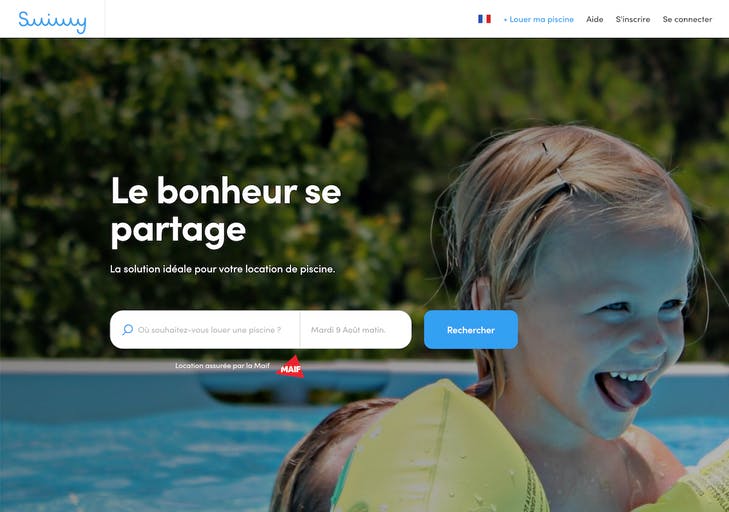
Cars are expensive to buy and own. Car rental marketplaces give folks without cars flexible access to a vehicle when needed and help car owners cover costs by renting their cars rather than letting them sit idle in a parking lot.
Drive lah is a peer-to-peer car rental marketplace focused on the Singapore and Australia markets. It competes against major car rental marketplaces like Turo and Getaround by offering a localized experience with a strong emphasis on customer experience and trust.
For example, as co-founder Gaurav Singhal shared in our interview, before Drive lah, it was illegal in Singapore for private individuals to rent out their cars. The founders were able to work with the regulatory limits and establish a foothold in their market.
In Drive lah’s story, you can read how the founders used Sharetribe to grow from an idea to a business with millions in funding and ambitious plans for the future.
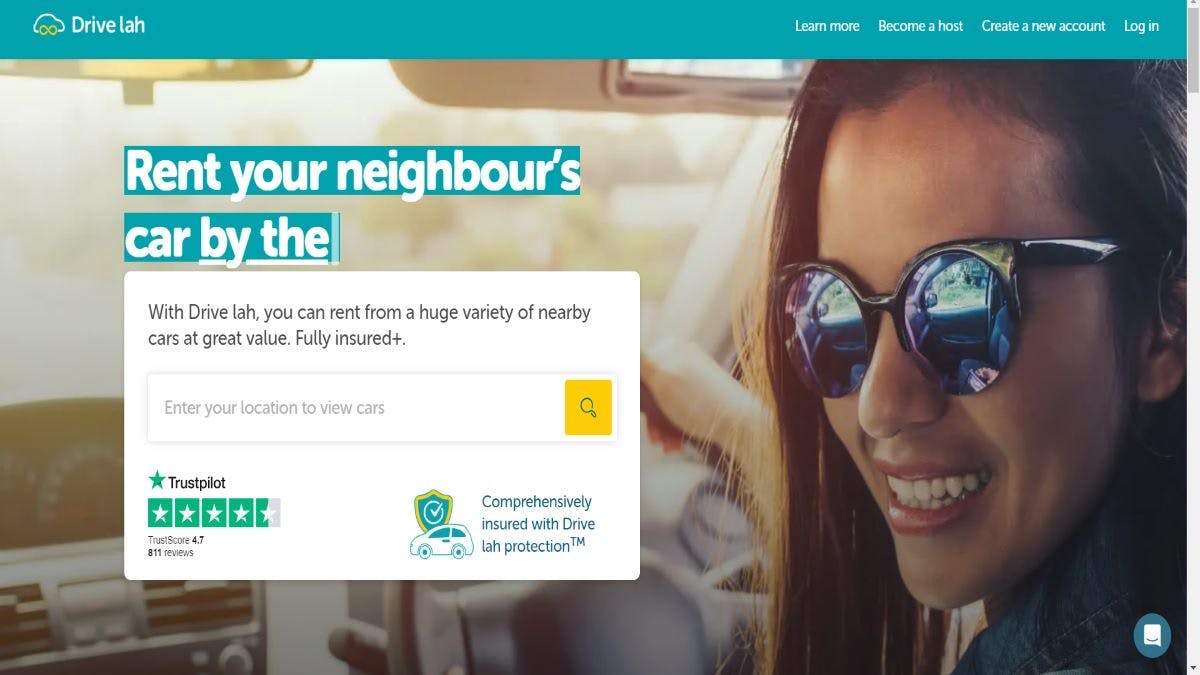
Cars aren’t the only vehicles that are expensive to own and sit idle most of the time. The same can be said about many vehicles: boats, RVs, bikes, and so on.
Outdoorsy and RVShare are well-known rental marketplaces for RVs and campervans. GetMyBoat, Boatsetter, and Sharetribe customer WetRentals allow boat owners to rent out their vessels when not in use.
Spinlister is a leading marketplace for peer-to-peer bike rentals, and Sharetribe customer Spokeo operates in the same niche, with a focus on mountain, gravel, and road bikes. Sharetribe also powers an interesting niche marketplace called Side By Side Share, dedicated solely to the peer-to-peer rental of UTVs and ATVs.
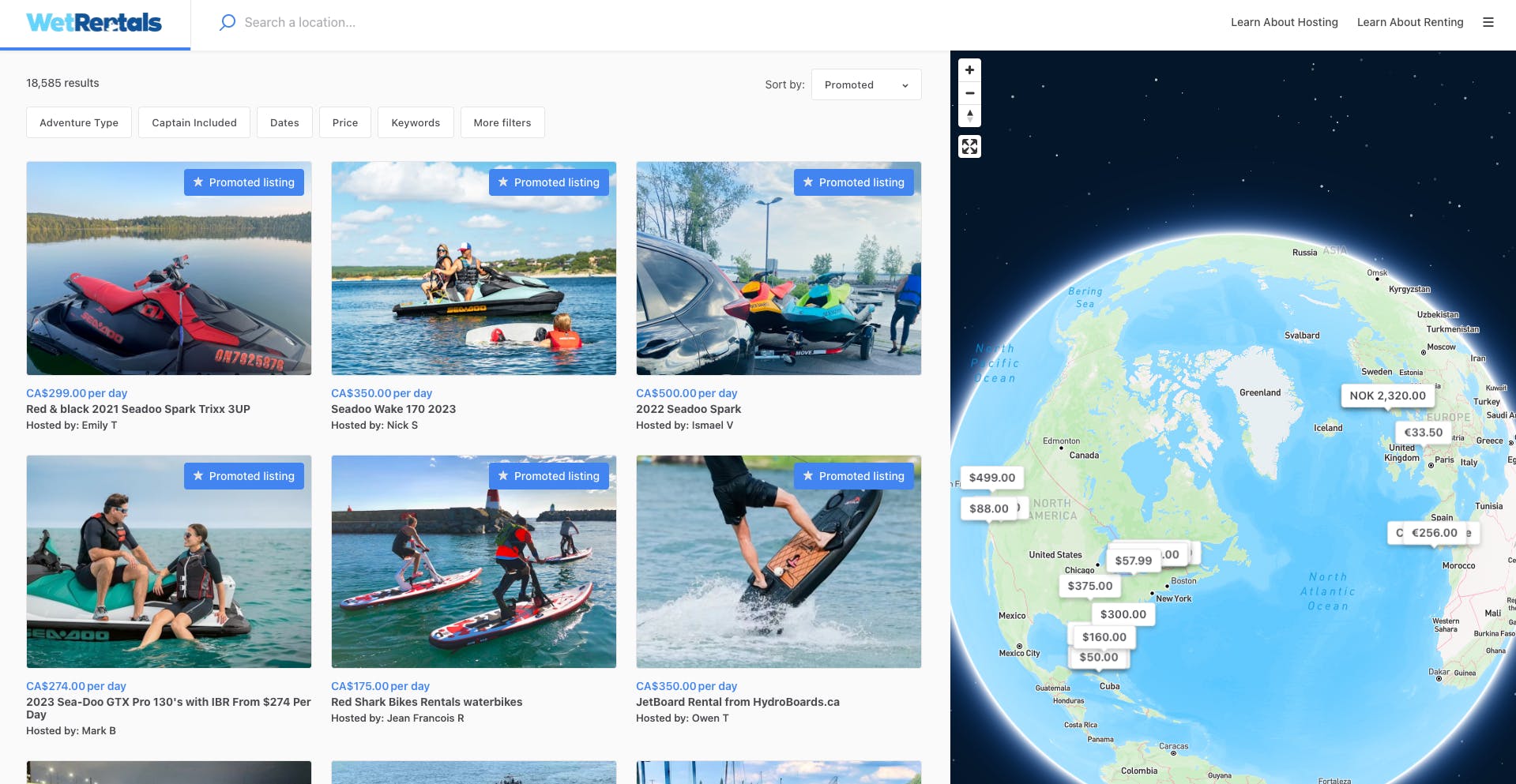
The largest equipment rental company in the US, BigRentz, is a B2B and B2C marketplace. It caters primarily to the needs of the construction industry but also serves other sectors and private individuals looking for construction and heavy equipment.
BigRentz’s rental inventory comes from different suppliers across multiple locations. This makes it easy for construction companies to find the equipment they need close to their job site, which helps them optimize logistics and reduce transportation costs. For rental owners, BigRentz offers a way to get maximum usage out of expensive construction equipment.
Sharetribe customer Eqpme is another solid example of a marketplace that enables equipment owners to monetize idle machinery and helps existing equipment rental companies get more eyes on their offering. The platform includes a wide selection of equipment categories.
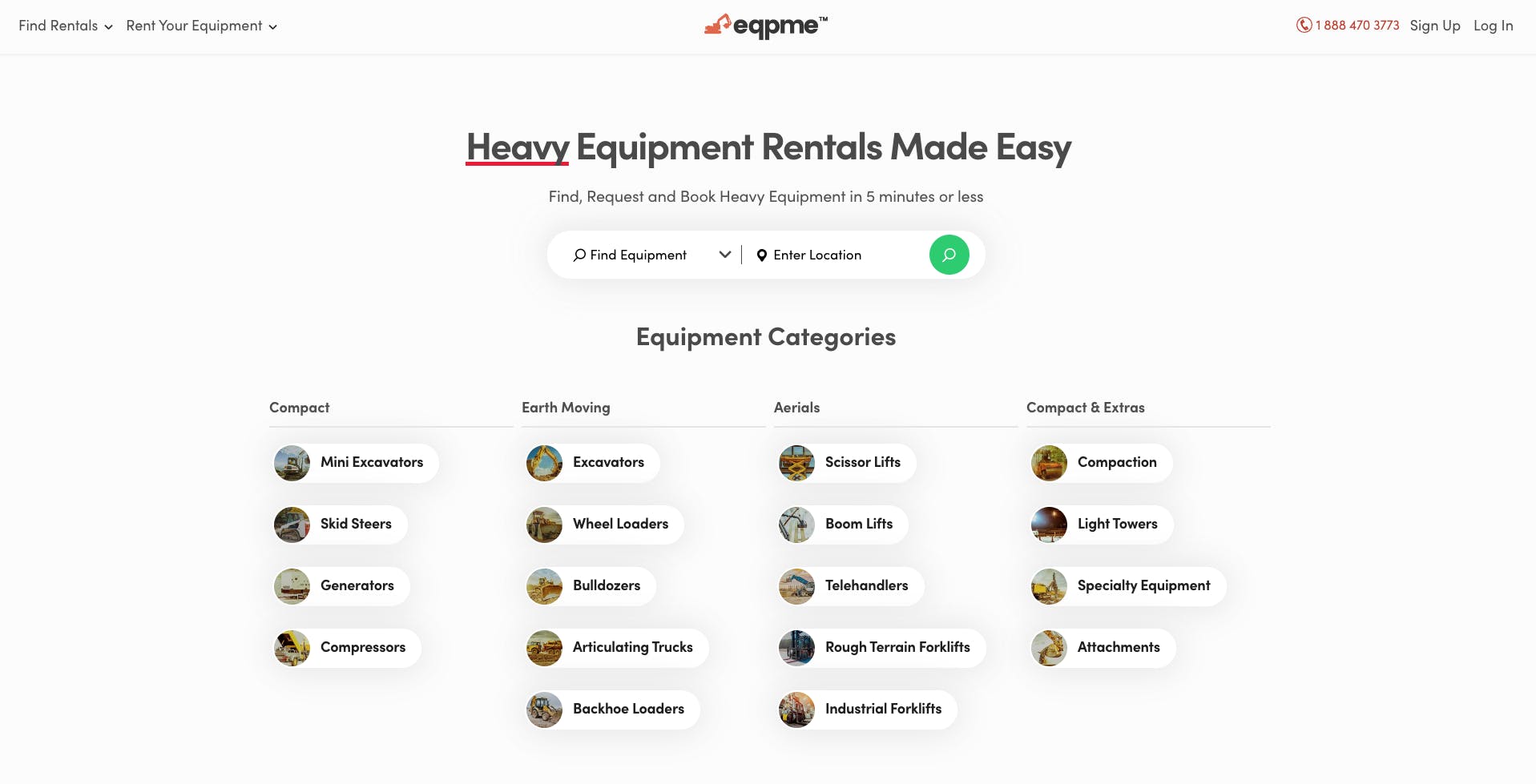
Some local marketplaces facilitate rentals across categories. These marketplaces often have a strong local focus and community element.
Peerby, for example, focuses on community-based sharing of everyday items. Whether it’s a power tool, a ladder, or a party tent, Peeby makes it possible for people to access these items without having to buy them.
This model helps buyers save money and reduce waste and environmental impact associated with the production and disposal of goods. At the same time, the owners of these items get to earn a bit of money and maximize the use of their items.
Peerby currently operates in more than 5,000 Dutch cities. A similar marketplace concept is the Sharetribe-powered Rent Anything Store. This rental marketplace helps people in the United States and Canada rent a wide range of items, everything from household equipment to sports gear.
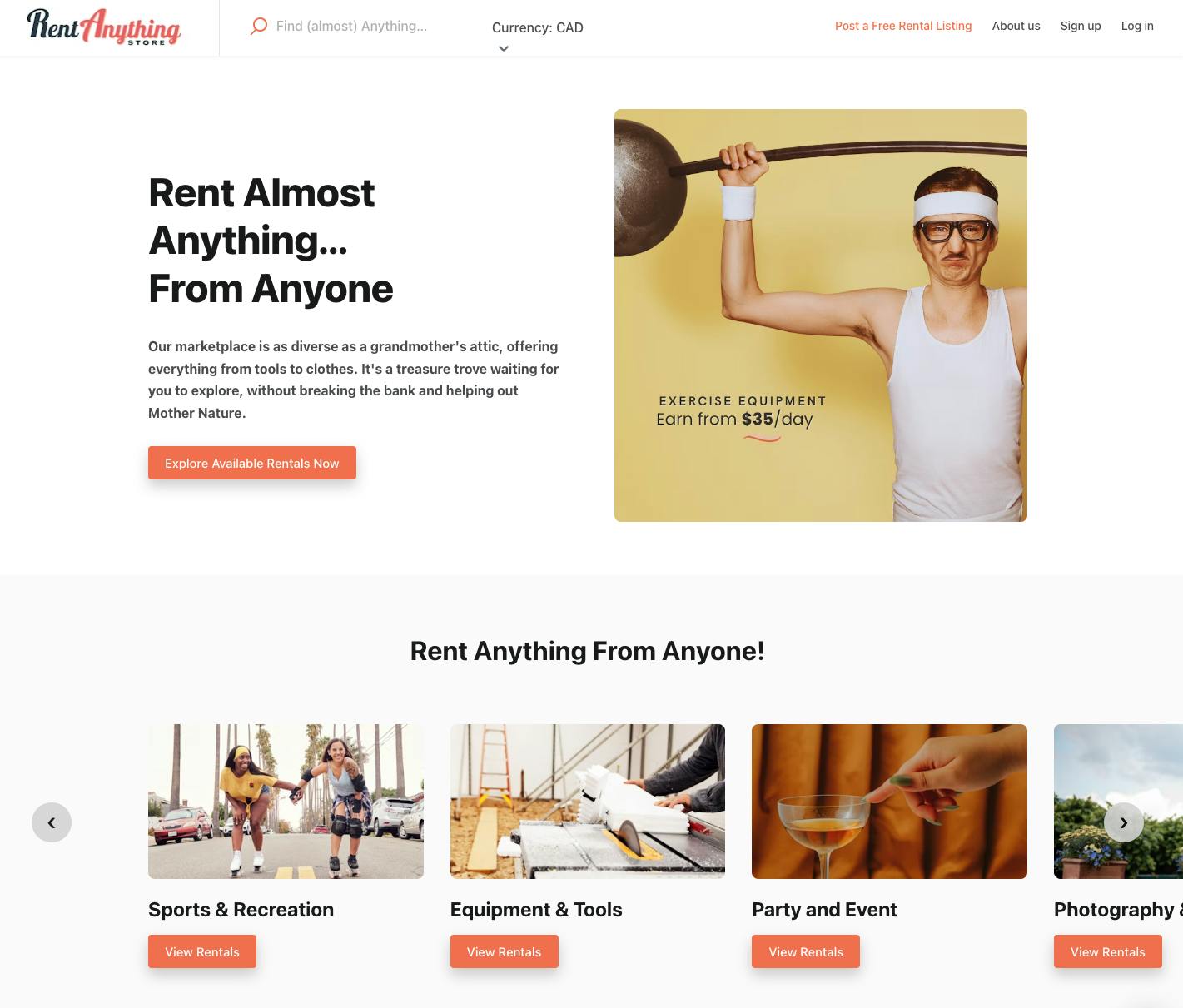
As you can see from all these examples, the possibilities for rental marketplace niches are as vast as your imagination.
Whether you’re dreaming up a unique idea or looking for inspiration, Sharetribe has got you covered with its full range of rental marketplace features. Explore more inspiring examples here.
The best rental marketplaces don’t get to the top by accident—they succeed because founders deeply understand their niche and solve real problems for their users.
Before you launch, take the time to validate your idea, focus on a specific community or need, and start small. This approach helps you build a platform that people actually want to use and come back to.
Once you have a clear idea and niche, the fastest way to launch is with Sharetribe. Our user-friendly marketplace builder gives you everything you need to build and run a rental marketplace—no coding required. Thanks to our software’s built-in flexibility, you can launch your platform in a day, test your idea quickly, and scale over time.
Start a free trial of Sharetribe and get your rental marketplace off the ground today.
With no-code marketplace software like Sharetribe, you can launch a basic rental marketplace in a day. A minimum viable platform (MVP) with core features like listings, booking systems, payments, and reviews can go live quickly.
Depending on complexity, customizing your design, adding unique features, or integrating third-party services may take a few weeks to a few months. Focus on launching fast to validate your idea, then improve iteratively.
Most rental marketplaces use a commission model because it aligns platform revenue with transactions. Listing fees can work in niche markets with high-value items, while subscriptions may suit B2B rental marketplaces with frequent repeat transactions.
Many successful marketplaces start with low-commission rates to attract early users and add additional monetization methods (like promotions or subscriptions) later.
The best way to prevent off-platform transactions (known as marketplace leakage) is to offer clear value during and after each transaction. Here are some proven ways to do this:
- Enable secure online payments and delayed payouts
- Offer trust-building tools like reviews, verifications, and dispute resolution
- Provide insurance or guarantees that only apply to on-platform bookings
- Remind users that off-platform transactions violate your terms and impact their reputation
Most likely not. A responsive website is enough for most early-stage marketplaces to launch and gain traction. Sharetribe’s platform is mobile-friendly by default, allowing users to browse, book, and manage listings on any device.
You can always invest in a mobile app later (using the same Sharetribe-powered backend as for your web app), especially if your niche relies on on-the-go interactions. But it’s rarely necessary in the beginning.
Legal and tax requirements depend on your target market, but often include:
- Data privacy laws like GDPR (EU) and CCPA (California)
- Sales tax or VAT collection requirements
- Income reporting, such as 1099-K forms in the US for hosts earning above certain thresholds
- Local regulations, such as business licenses, rental zoning laws, or registration rules for short-term rentals
Not necessarily. Insurance isn’t always mandatory, but it’s a strong trust driver, especially for high-value rentals like homes, cars, and professional equipment. Many marketplace platforms offer:
- Optional insurance add-ons for providers or renters
- Platform-provided protection to reduce disputes and improve retention
- Recommended insurance providers via partnerships
Start your 14-day free trial
Create a marketplace today!
- Launch quickly, without coding
- Extend infinitely
- Scale to any size
No credit card required
